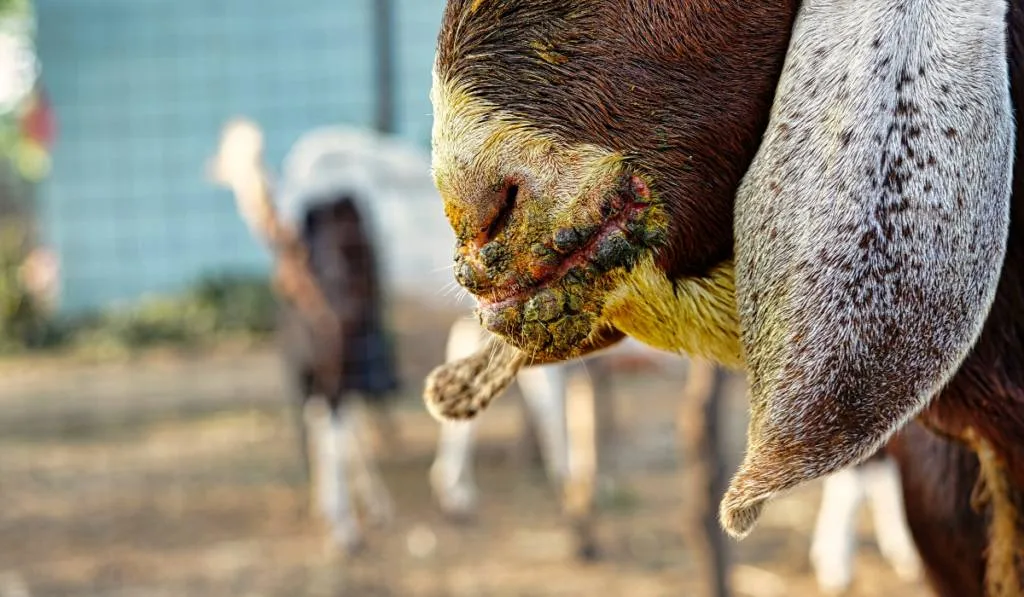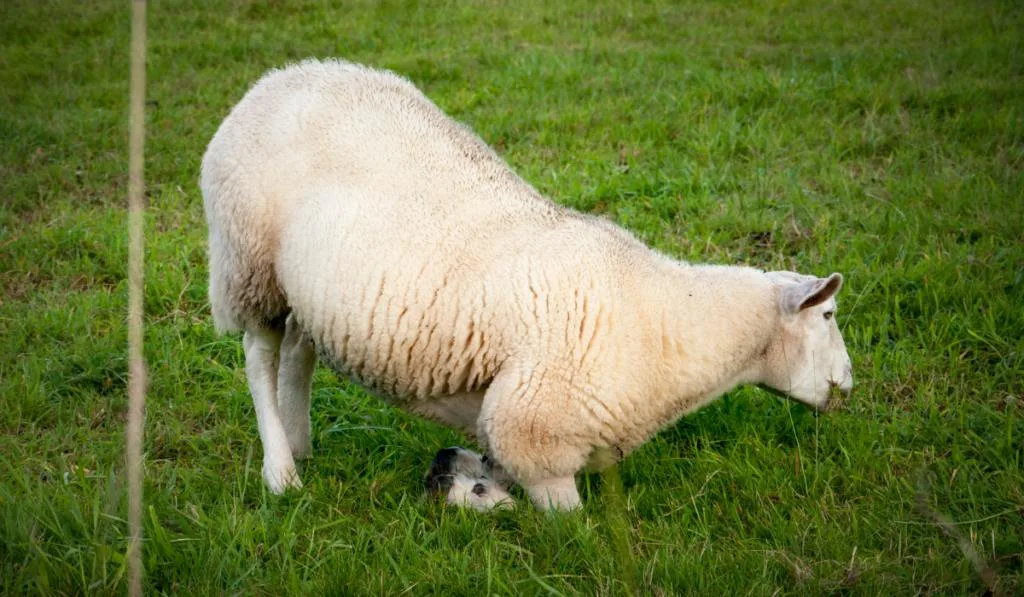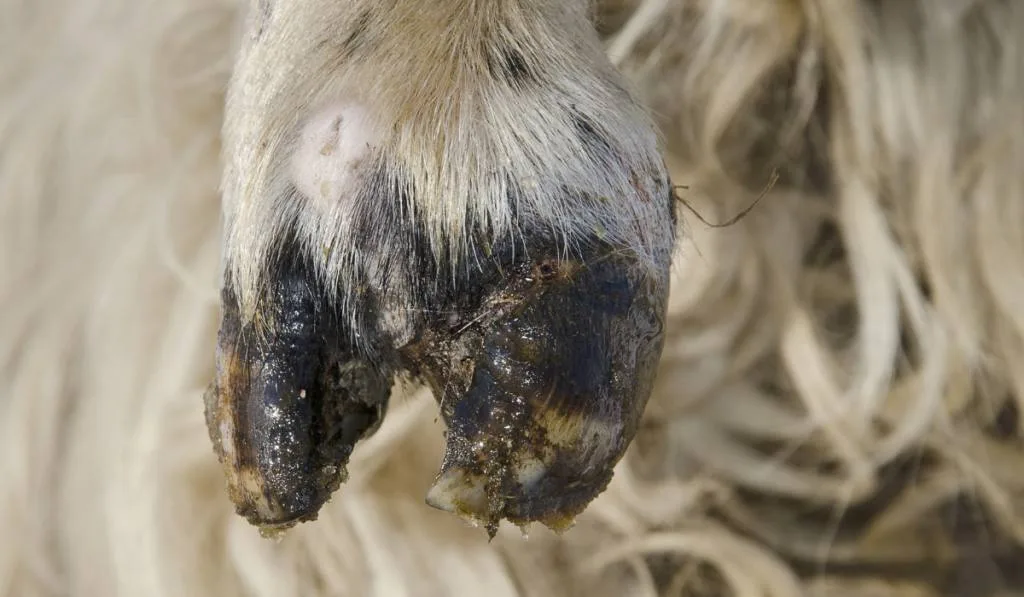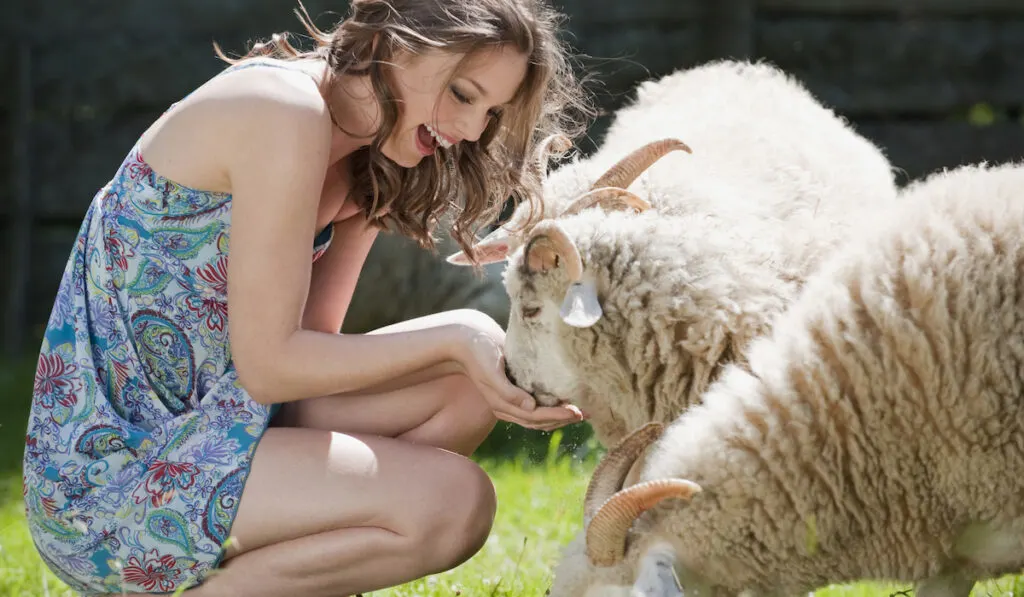Hoof problems are one of the most significant problems for sheep. Standing all day in wet and frigid conditions makes their feet vulnerable. They require constant upkeep to prevent infections and other issues from spreading.
Herders and owners of sheep trim hooves to prevent unwelcome growth. This is because overgrown hooves trigger health problems and make it difficult for the sheep to move. Identifying hoof problems early enough is essential to limiting their impact.
If you own sheep or care for them, here are some of the most common sheep hoof problems and potential treatments. Thankfully, concerns like foot rot and bacteria are relatively easy to cure.
Table of Contents
1. Foot Rot
Bacteria live almost everywhere, including in the grass and dirt sheep stand and lay in all day.
When a sheep has a cut or open sore on its hoof or legs, it becomes easy for bacteria to penetrate into the sheep’s foot, thereby infecting the animal with foot rot.
The bacteria multiply in the sheep and kill the surrounding tissue. As a result, the hoof becomes damaged and, in severe cases, can fall off. Untreated, it can make a sheep lame and even kill it.
Treatment involves giving the sheep a course of antibiotics. However, earlier diagnosis increases the chances of avoiding lingering injuries.

2. Foot and Mouth Disease
Foot and mouth disease affects several different animals aside from sheep. There are more obvious signs of the disease in pigs and cows, but sometimes it’s harder to notice in sheep.
Typically, sheep will develop sores around their mouths and feet. The condition is very contagious and can quickly spread from a single animal to the rest of the herd.
Whenever a foot and mouth disease outbreak occurs, herders must cull out sections of their herds to prevent widespread outbreaks.
3. Shelly Hoof
Sheep’s hooves must be trimmed regularly to prevent conditions like shelly hoof.
Animals with shelly hooves usually develop cavities on the front of their feet, which can become painful and affect their movement.
Shelly hoof is more common in wet dung and dirt conditions. It is often a symptom of other bacterial infections in sheep. This particular hoof problem is a heightened concern for sheep living in areas with high annual rainfall.
Sheep with shelly hoofs have to go through deep cleaning to get dirt and dung out of the cavity. Bathing sheep in a zinc sulphate solution can clean the hoof and stop the shell from growing. Afflicted sheep must be kept in dry areas until their hooves heal.

4. Arthritis
It should come as no surprise that sheep develop arthritis. Over a lifetime, old sheep experience swollen joints and hoofs that become stiff and painful. In addition, some sheep’s hooves become particularly sensitive to touch, making them hesitant to walk around or stand up.
If you notice that your older sheep aren’t moving around but seem otherwise healthy, they could be having trouble with arthritis.
Upon inspection, the joint may feel warm to the touch. They can appear larger than normal joints or look knobbly.
Open wounds and bacterial infections can exacerbate the symptoms of arthritis. Treatments involve medications and wraps that support sheep hooves and legs more.
5. Sheep Foot Abscess
Sheep often develop foot abscesses if their feet aren’t trimmed. With an abscess, the sheep has an obvious wound with tissue damage. Usually, the abscess is right above the hoof.
The affected part of the sheep’s foot will often show signs of redness, swelling, and puss oozing out of the area. These are all signs that the abscess is very painful for the afflicted sheep.
To treat it, you must keep the sheep’s hooves in good condition. Avoid wet conditions and remember that heavier sheep are at more risk.
You can treat the abscess with antibiotic injections and bandages. Large abscesses, however, can leave a sheep’s hooves disabled and disfigured.

6. Foot Scalding
Sheep that move and graze in the grass are at elevated risk of foot scalding. In addition, the wetness that is constantly underfoot can trigger soreness, redness, and excess moisture.
Sometimes, you can spot foot scalding by the white and pasty matter that appears on the edges or inside the hoof.
Foot scalding is an early precursor to foot rot in older sheep. To eliminate scalds, affected sheep need regular foot baths and antibiotics. Fast treatment lowers the chances of lameness and reduces symptoms.
7. Normal Cuts
In addition to bacterial infections, sheep frequently suffer cuts and scrapes on their hooves.
Usually, a cut on the hoof is no big deal, but open wounds leave sheep susceptible to infections.
Watch for any indications your sheep are limping or are reluctant to move or stand. Then, inspect their hooves to look for any injuries.
If you find cuts from rocks, sticks, or any other hard objects, clean the wound and keep it as dry as possible. If the cut is severe enough, talk to a vet to get some antibiotics to prevent any infections.
8. Bluetongue
Bluetongue is a condition that sheep encounter when certain insects bite them.
After the bites, sheep develop lesions on their feet, and some animals get a red band across the top of their hooves.

How to Avoid Sheep Hoof Problems?
Sheep and cows, pigs, horses, and other hoofed animals need regular upkeep to avoid pain and movement issues.
Keep your sheep’s hooves trimmed and inspect them frequently to look for any signs of pain or infection. Anytime you see abnormal growths, redness, or liquid coming from their feet, the sheep likely need immediate medical care.
Getting the sheep out of wet conditions is essential. The moisture makes things worse by facilitating bacteria growth and slowing the healing process.
In addition, antibiotics, bandages, and wraps will reduce pain and help support the hooves.

Conclusion
Sheep are strong animals that keep standing and walking despite significant problems with their hooves. Unfortunately, when they stop standing or walking, they’re likely in extreme pain or lame.
Don’t wait until the sheep can’t walk anymore. Keep a close watch and schedule trimmings to keep their feet in great shape.
Places with a lot of rain and mud are at more risk of infections and lingering hoof problems than places with generally dry ground.
Trimming the hooves and administering antibiotics early will help cure them faster and prevent further infections and deterioration.
Resources
- https://www.zoetis.com.au/livestock-solutions/sheep/optimise-ewe-health/lameness-and-other-foot-problems.aspx
- https://www.jrpiercefamilyfarm.com/2019/04/05/12-common-hoof-problems-in-sheep/
- https://www.fwi.co.uk/livestock/health-welfare/foot-health/how-to-correctly-diagnose-and-treat-the-main-causes-of-sheep-lameness
- The role of pre-emptive culling in the control of foot-and-mouth disease | Proceedings of the Royal Society B: Biological Sciences (royalsocietypublishing.org)
